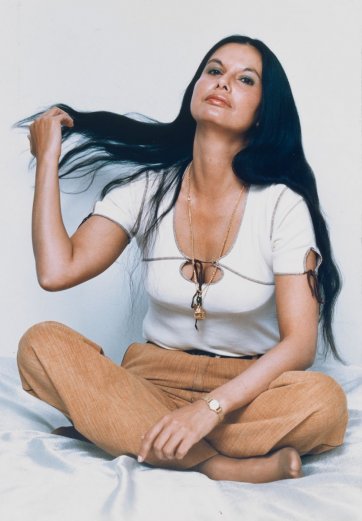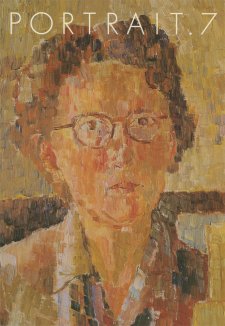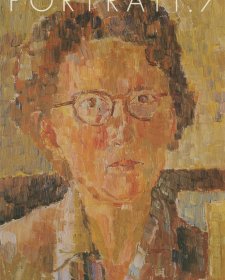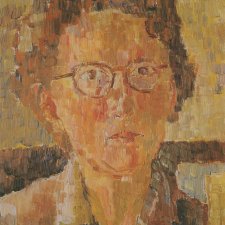Myself and Eye is a major retrospective of the portrait photographs of Lewis Morley (b. 1925), spanning four decades from 'swinging sixties’ London to the rising cultural tide of seventies and eighties Australia.
He is best known for his nude portrait of Christine Keeler sitting on the Arne Jacobsen chair, which has become an icon of twentieth century image making. Morley migrated to Australia in 1971 producing portraits, fashion, advertising and interior photography. He spoke to Magda Keaney at his home in Sydney on 22 January 2803.
Lewis, I wanted to start by asking you about your very first interest in photography. You did actually want to be a painter but I wanted to know as far back as you can remember, what your first interest in photography was?
When I was very young, I suppose everyone had a little camera, and I had a little Bakelite Kodak camera. It wasn't until I got to the Royal Air Force that I took a bit more interest in photography buying a little Ikonta, a Zeiss Super 8 camera which had bellows on it. It was a very good quality camera. Then at art school I started taking photography more seriously. I started using the camera because I wasn't very good at drawing people. I could draw buildings; most of my paintings were still lifes and architecture, but when it came to actual people I found it was much easier for me to take photographs. I found people interesting, and I found that photography took that part of my lack of good drawing.
So were you the sort of person that always had a camera with you?
Ah, yes, I suppose so. When I was off duty [in the RAF] there was a camera, a pocket camera, I just kept in case anything happened. And I carried on doing that and I still do it now. Although I'm not really still doing photographs, I carry a camera with me just in case. And occasionally, you know, I do take one or two shots.
Skipping a couple of years, you went to Paris, you studied further ... you returned to England and married Patricia Clifford. You have maintained an interest in photography. You have shown some photos to Normal Hall the editor of Photography magazine, who then publishes your first pictures in 1956. And the heading is 'Our latest young British Discovery'.
Yes, that's right.
You have identified that as a time when you began work as a professional photographer. When you started to think about yourself as a photographer did you aspire to any particular style like photojournalism?
Yes. I think my first attitude towards photography was as something that your eye sees that is just great and you can capture it. If you draw it, that moment has gone and you are looking at it second-hand, whereas a photograph, that moment, catching it, is a living moment. I suppose my hero at that time was Cartier-Bresson, like everybody else's in photojournalism, and that was the sort of tack I found myself veering towards. I wasn't really interested in doing beautiful landscapes or in doing still lifes. It was the capturing of the moment which I was interested in. Rather than creating something, I was capturing something.
What other photographers were you looking at, at that time?
I suppose my earliest influences were Cartier-Bresson for photojournalism, Irving Penn's portraits and Richard Avedon's early fashion because he worked the way I loved to work - outdoors, reportage. And another photographer I thought very important was Tony Armstrong-Jones [Lord Snowdon]. I consider Armstrong- Jones in his early days a very, very powerful photographer, especially his theatre work. And of course another photographer which I liked was John Deakin.
You have taken portrait photographs of a huge number - certainly hundreds - of people, important actors, politicians, artists and intellectuals in London and Australia, across four decades. What do you consider some of your most successful portraits?
I suppose my most successful ones were where I wasn't actually in control. One which is quite good is the Archbishop of Canterbury. I was in his house and I remember getting on a low angle to shoot up at him and he suddenly pointed at me and said, 'Hey, you're going to photograph my belly,' or something like that, and it snapped at that point. And it is a very casual, lively photograph of an archbishop pointing down. That's one of my successful ones, but I wasn't actually in full control, you know, as things happened, and I caught that one shot. I had other photographs on the roll which didn't have the same urgency. Another photograph which I find quite good was because of a lack of lighting. I was at a wedding reception and the bride had said, 'Oh Lewis, I'd like you to meet a friend of mine, Cecil Beaton.' I never ask people, 'May I photograph you?' but in this case he was dressed in his morning suit and his top hat and he looked quite good so I said, 'Can I take your photograph?' and he said, 'Yes. Where would you like me?' And because I didn't have any extra lights with me I said, 'Look, come to the window,' and I placed him against the window. And because there was no light, it became a silhouette. There again I remember taking two or three, I think - it might have been three shots - and it was the end of the roll of film. I was so embarrassed, and I said, 'Okay, fine, thank you.' He said, 'Are you finished?' and I said, 'yes'. He said, 'You don't want to take any more?' and I said, 'No, no, that's fine.' Luckily, the pictures came out okay.
The Keeler shot was a little bit like that too, wasn't it?
Yes. I was asked to take photographs of Christine Keeler. In the first one she had a little jerkin on and then the producers wanted her nude and she didn't want to be photographed in the nude. So I got rid of everybody from the studio and said, 'Look, take your clothes off, get behind the chair. They won't see anything but you'll be fulfilling your contract.' I just re-created some of the earlier shots, and the last roll was all done within a few minutes to tell the truth. And it is the very last shot on the roll, I was walking away and turned back, and she was in a perfect position and I just turned round and snapped it. And that became the iconic shot.
Are those people your favourite subjects too? Who are some of your favourite people that you photographed?
Well, favourite... There are some friends who you can shoot; they'd be favourites. Or there are some portraits which you've done which turn out quite well and I suppose become your more favoured shots, for instance because of the way one reacted with the sitter. I found Clint Eastwood very, very easy to work with, and he found me so easy to work with - I took the roll in next to no time - that he said to me, 'Are you finished?' and when I said, 'yes', 'Gosh,' he said, 'you're so quick you can have me any time you want me.'
And the portrait of Charlotte Rampling standing in front of the target. Was that a fashion shoot?
It wasn't a fashion shoot, really. It was a shoot for fashion. Charlotte thought that she would like some photographs to be used for fashion modelling, so I took a portfolio of pictures for her and she would go to fashion agencies and show the photographs. The early photographs I took of Charlotte were for her fashion folio. I had quite a lot of young actors and actresses, some known and some not so well known, absolutely beginners, coming to me, being sent by their agents. But when she became quite well known as an actress, I then had to photograph her for She magazine, for a page called 'Fabulous', where the dresses cost a lot of money, and now here was this girl who years ago had come to have pictures taken to become a fashion model, who was being used as a fashion model because she was a famous actress.
You have obviously been working with Barry Humphries over a long period.
I've been working with Barry for a long time. With Barry, most of my successful pictures, we just went out on location somewhere and snapped a couple of pictures in different situations. And because he's expecting nothing from me and I'm expecting nothing from him, we just go ahead and pictures come out that way. I don't control my sitters. I mean, I make a few suggestions, but then it is up to them to work as well, you know.
















